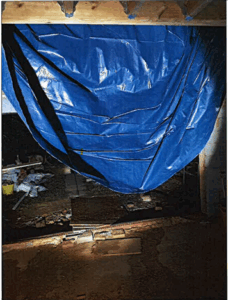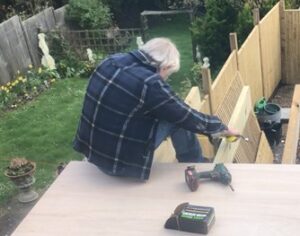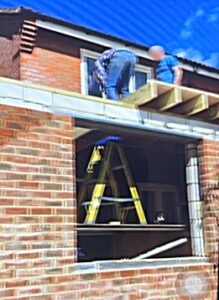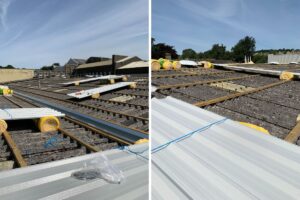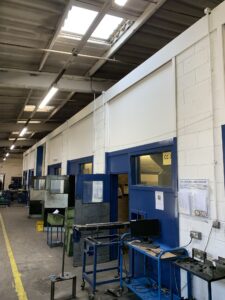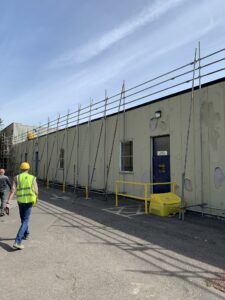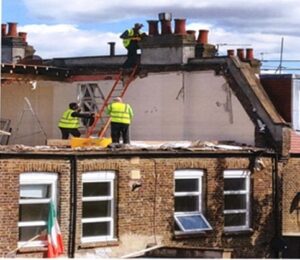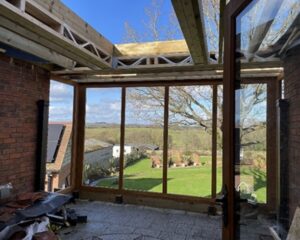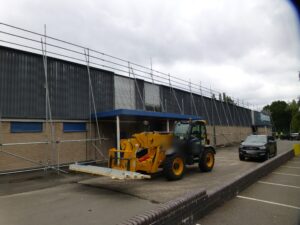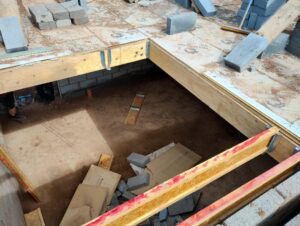Companies fined after apprentice fell from height installing CCTV
- Apprentice fell through fragile roof.
- One company failed to properly plan for the work.
- Second company failed to produce documents as part of investigation.
Two companies have been fined after an apprentice fell from height while installing CCTV in Weymouth.
The then 20-year-old electrical apprentice had been working for Tristan G Murless Limited at one of their sites at a commercial industrial estate at Lynch Lane on 13 July 2022. He had been using a makeshift crawling board when he fell around 11 feet through a fragile roof to the concrete floor below.
The incident took place on the roof of a lean-to attached to a main warehouse. The project involved the installation of electrical cables and conduit around the perimeter of the warehouse in readiness for the installation of CCTV. The man lost consciousness at some point prior to the arrival of the ambulance and could not feel his body. He was unable to walk temporarily after the incident and sustained injuries to his back, including muscular tissue damage which requires physiotherapy.

An investigation by the Health and Safety Executive (HSE) found that Tristan G Murless Limited failed to ensure the health, safety and welfare of their employees, by failing to properly plan and provide suitable equipment to prevent the fall through the fragile roof.
- Working at height remains one of the leading causes of workplace injury and death and HSE has detailed guidance on working safely at height.
HSE guidance states that employers must ensure that work at height is properly planned, appropriately supervised, and carried out in a safe manner and that the planning should include the selection of work equipment. Every employer should take suitable and sufficient measures to prevent any personal falling a distance liable to cause personal injury. Workers should not have worked on the fragile roof where it was avoidable. Where roof work is not avoidable, edge protection, roof coverings and stagings or similar should be in use to stop a fall, with personal fall protection where needed.
A second company – Ellis and Partners (Bournemouth) Limited – has also been fined after they failed to comply with a HSE demand to produce documents to assist its criminal investigation into the incident. The request was made by HSE inspector Rebecca Gittoes under section 20 of the Health and Safety at Work etc. Act 1974.
Tristan G Murless Limited of Avon Close, Weymouth, Dorset pleaded guilty to breaching Regulation 2(1) of the Health and Safety at Work etc. Act 1974. The company was fined £16,000 and ordered to pay £4,168 in costs at Bristol Magistrates Court on 28th November 2025
Ellis and Partners (Bournemouth) Limited of Dean Park Crescent, Bournemouth, Dorset pleaded guilty to breaching Regulations 20(2)(k) of the Health and Safety at Work etc. Act 1974. The company was fined £6,000 and ordered to pay £1,200 in costs.
Speaking after the hearing, HSE inspector Rebecca Gittoes said: “Every year, a significant proportion of incidents, many of them serious and fatal, occur as a result of poor work at height planning.
“In this case, a young man at the start of his career was failed by his employer.
“Had the company suitably risk assessed the task, provided suitable work equipment and a safe system of work, this incident would not have happened.
“The case brought against Ellis and Partners (Bournemouth) Limited should also underline to everyone that the HSE and the courts take a failure to comply with section 20 very seriously.
“We will not hesitate to take action against companies which do not co-operate by failing to provide requested documents.”
This HSE prosecution was brought by HSE enforcement lawyer Rebecca Schwartz and paralegal officers Daniel Adams and Sarah Thomas.
Further information:
- The Health and Safety Executive (HSE) is Britain’s national regulator for workplace health and safety. We are dedicated to protecting people and places, and helping everyone lead safer and healthier lives.
- More information about the legislation referred to in this case is available.
- Further details on the latest HSE news releases is available.
- HSE does not pass sentences, set guidelines or collect any fines imposed. Relevant sentencing guidelines must be followed unless the court is satisfied that it would be contrary to the interests of justice to do so. The sentencing guidelines for health and safety offences in Scotland can be found here.
